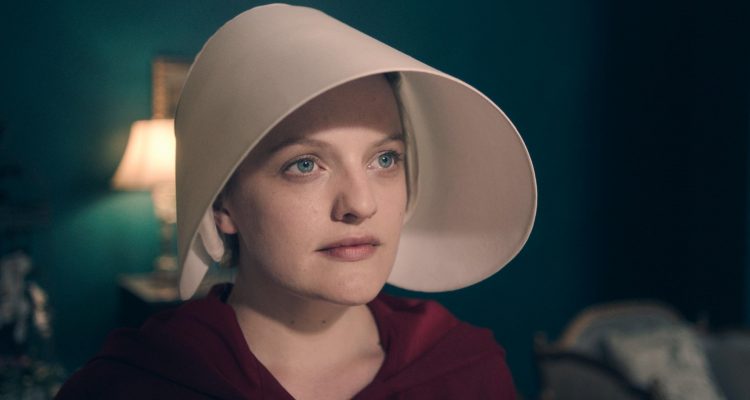If you thought spring TV was nuts already, juggling AAA shows like “Fargo,” “Billions,” “The Leftovers,” “Silicon Valley,” “The Americans” and “Veep” in the past few weeks, we’re really only just getting started. The next few weeks will bring the return of “Catastrophe,” “Sense8,” “House Of Cards,” “Unbreakable Kimmy Schmidt,” “Casual” and “Master Of None,” and the debut of “I Love Dick,” “Dear White People” and “American Gods,” to name but a few. But the one that we’ve been most excited is Hulu’s “The Handmaid’s Tale,” and the good news is that the show just launched its first three episodes on the streaming service today.
The adaptation of Margaret Atwood’s seminal dystopian novel, starring Elisabeth Moss as a woman in a bleak future society run, slightly more so than our present one, by a terrifying, brutal patriarchy that see mostly women as sex slaves intended for breeding, has promised to be something quite special for a while, and our review of those first three episodes suggest it lived up to our hopes — we called it a “brilliant, compellingly moreish start.”
You can finally check the show out yourself now, with the first three episodes on Hulu now (they’ll be upped weekly after that), and to celebrate, we’re delighted to say that we’ve got the exclusive premiere of an extract from the show’s score, by “August: Osage County” composer Adam Taylor (who previously worked with director Reed Morano on her debut feature “Meadowland”).
READ MORE: ‘The Handmaid’s Tale’ Is A Superb, Necessary Show For 2017 (And For Hulu) [Review]
“One word that really stuck in my head from show creator Bruce Miller was ‘absurd’ and it consistently shaped how I approached the score,” says Taylor. “I remember [director] Reed [Morano] saying, a number of times, that she wanted a track that sounded f*cked up, in a psychological sense. This was in reference to the theme that would represent the system, the antagonist of the show.
“The theme that represents the system are a relentless and indifferent force that are slowly disfiguring society, the inhabitants of Gilead,” he continued. “I thought about it like waves of sound, waves that slowly grew in volume and dissonance until it overcame the senses. This led to what we landed on as the opening theme, and also how we approached the dynamics and shaping of the orchestral elements of the score. We knew from the start that we wanted classical instruments as well as synths and atonal elements. One idea for the score was to reiterate sounds and instruments through processes to the point where there was loss in fidelity, like a poor quality photocopy…much like how life in Gilead was a distorted replica of normal life.” He experimented with the sound, using an old tape echo to achieve this sound. “I went as far as tracking an instrument, then changing the speed of the tape to ‘fake’ melodic changes. It took some time to get right, but was worth it in the end — and ended up being crucial to making, what was essentially a two-note theme, sound emotive and interesting.”
It’s a great, haunting score for a great, haunting show, and you’ll be able to pick it up for yourself when Lakeshore Records release the soundtrack on Friday, April 28th. And if you’ve already seen the first few “Handmaid’s Tale” episodes, let us know what you make of them below.

